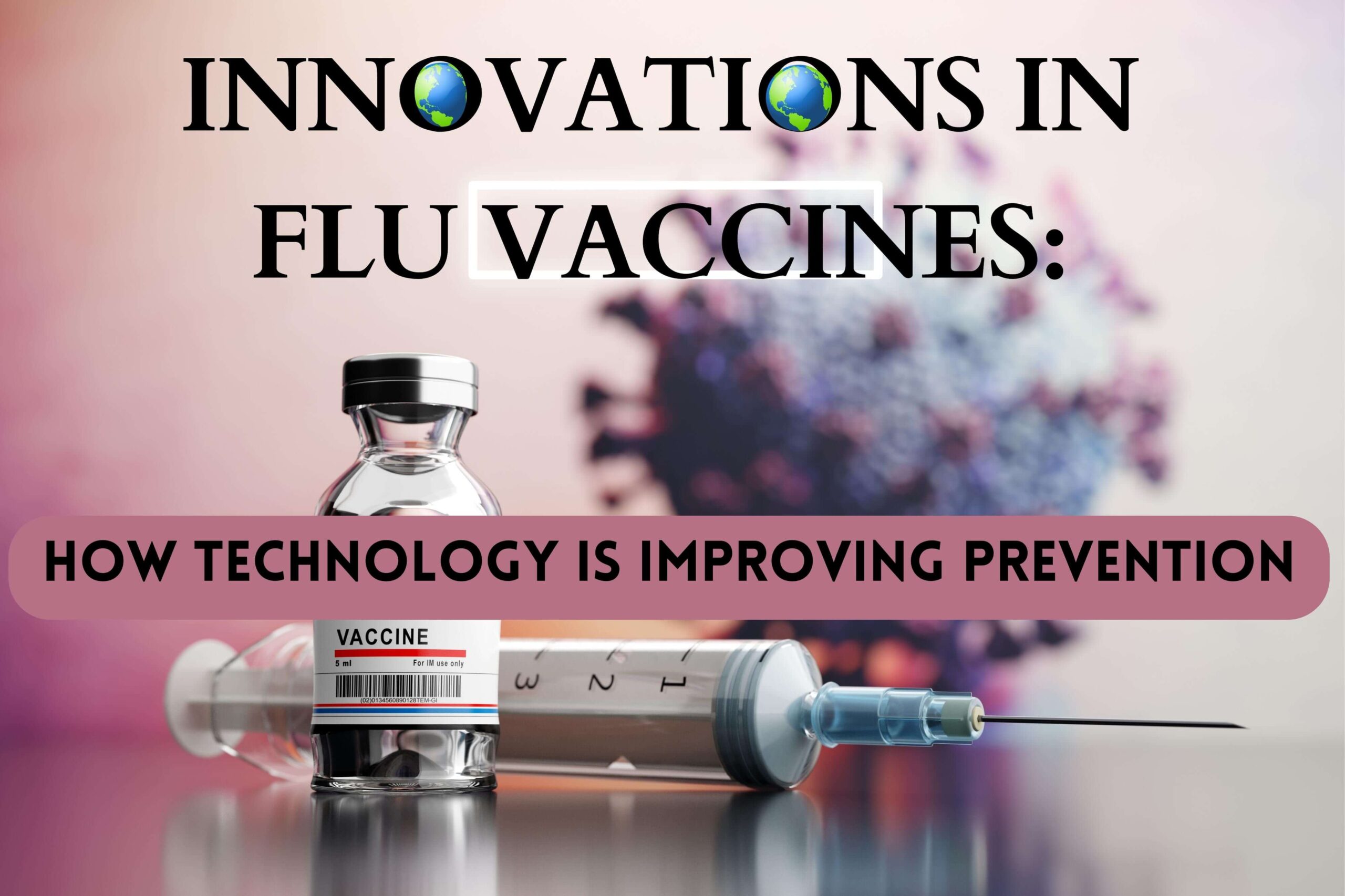Introduction
It is possible that the flu infection can cause a profoundly infectious respiratory ailment. Innovations in Flu Vaccines: Innovations in Flu Vaccines The flu can lead to hospitalization, serious sickness, or indeed death. Influenza vaccines have helped fight the disease. But, the flu virus mutates, making it challenging to develop effective vaccines. The fight against flu has seen significant technological advancements recently. It is possible that the flu infection can cause a profoundly infectious respiratory ailment. Innovations in Flu Vaccines: Innovations in Flu Vaccines The flu Technological advances have improved flu prevention and treatment. This article will examine some of the most effective technological advances in fighting the flu.
Historical Overview of Flu Vaccine Manufacturing
The first flu vaccine was developed in the 1940s using chicken eggs. The process involved injecting the virus into fertilized chicken eggs, and the virus replicated inside the eggs. The virus was then killed, and an egg vaccine was harvested. This process is still used to manufacture flu vaccines.
However, flu vaccines have seen significant technological advances. Rapid technological advancements have improved the process. In the past, flu vaccines took six months to manufacture a flu vaccine. The process can be completed in four weeks with the latest technologies.
The Impact of Technological Advances on Flu Prevention and Treatment
Technological advances have significantly affected flu prevention and treatment. The development of more effective vaccines has been one of the most significant impacts. There were few strains of influenza that could be protected against by flu vaccines in the past. However, with technological advances is possible that the flu infection can cause a profoundly infectious respiratory ailment. Innovations in Flu Vaccines: Innovations in Flu Vaccines The flu, vaccinations cannot protect against multiple virus strains.
In addition to vaccines, technological advances have also led to new flu treatments. These treatments include antiviral medications that reduce illness severity and duration.It is possible that the flu infection can cause a profoundly infectious respiratory ailment. Innovations in Flu Vaccines: Innovations in Flu Vaccines The flu Technological advances have also led to the development of more accurate diagnostic tests for the flu. These tests can help identify the virus early and prevent its spread.
Technological Advances in Flu Vaccine Manufacturing

There have been significant technological advances in flu vaccine manufacture. The method has ended up quicker, more effective, and more cost-effective as a result of these progressions.It is possible that the flu infection can cause a profoundly infectious respiratory ailment. Innovations in Flu Vaccines: Innovations in Flu Vaccines The flu One of the most critical advances in cell-based technology is vaccine manufacture. It is possible that the flu infection can cause a profoundly infectious respiratory ailment. Innovations in Flu Vaccines: Innovations in Flu Vaccines The flu This process involves growing the virus in animal cells instead of chicken eggs.
Another technological advance is recombinant DNA technology. This technology involves inserting the flu virus genes into a virus-like particle. This particle mimics the virus structure, but it is nIt is possible that the flu infection can cause a profoundly infectious respiratory ailment. Innovations in Flu Vaccines: Innovations in Flu Vaccines The flu ot infectious. The body recognizes the particle as the flu virus and produces an immune response to protect against the virus.
How Technology Has Improved Flu Vaccines
Technological advances have improved flu vaccines in several ways.It is possible that the flu infection can cause a profoundly infectious respiratory ailment. Innovations in Flu Vaccines: Innovations in Flu Vaccines The flu One of the most significant improvements is protecting testing against multiple virus strains. In the past, vaccines were only effective against a limited number of flu strains. With new technologies, vaccines can now protect against various strains of emergencies.
Another way technology has improved flu vaccines is by making them more effective. Various technologies have allowed scientists to develop vaccines that stimulate a more robust immune response. It is possible that the flu infection can cause a profoundly infectious respiratory ailment. Innovations in Flu Vaccines: Innovations in Flu Vaccines The flu This means the body can better fight off the virus once infection occurs.
The Use of Recombinant DNA Technology
Recombinant DNA technology has been a significant technological advance in the fight against the flu. This technology involves inserting the flu virus genes into a virus-like particle. It is possible that the flu infection can cause a profoundly infectious respiratory ailment. Innovations in Flu Vaccines: Innovations in Flu Vaccines The flu This particle mimics the virus structure, but it is not infectious.
The body recognizes the particle as the flu virus and produces an immune response to protect against the virus. Innovations in Flu Vaccines This technology has several advantages over traditional vaccine manufacturing methods.It is possible that the flu infection can cause a profoundly infectious respiratory ailment. Innovations in Flu Vaccines: Innovations in Flu Vaccines The flu It is faster and more quickly efficient and can quickly produce large vacuums.
Nanotechnology and Flu vaccines
Nanotechnology has moreover played a noteworthy part within the battle against the flu. Nanoparticles can deliver vaccines directly to immune cells. This allows for a more targeted immune response and increases vaccine effectiveness.
Nanoparticles can also improve vaccine stability. This is critical because vaccines can lose effectiveness if not stored properly. Nanoparticles protect vaccines from degradation and increase shelf-life.
Example of technological advancement in Flu Vaccine Manufacturing
One example of a technological advance in flu vaccine manufacture is the recombinant hemagglutinin (HA) protein. HA is a protein on the flu virus’s surface that allows it to enter cells.
Scientists have developed a way to produce HA protein using insect cells.It is possible that the flu infection can cause a profoundly infectious respiratory ailment. Innovations in Flu Vaccines: Innovations in Flu Vaccines The flu This process is faster and more efficient than the traditional manufacturing method of recombinants to create a vaccine that protects better against the flu.
Challenges in Implementing Technological Advances in Flu Prevention and Treatment
As a result of technological advances in flu prevention and treatment, one of the biggest challenges is cost. Incredibly advanced technologies can be expensive to develop and implement, It is possible that the flu infection can cause a profoundly infectious respiratory ailment. Innovations in Flu Vaccines: Innovations in Flu Vaccines The flu making them inaccessible to some people.
Another challenge is regulatory approval. New technologies must undergo rigorous testing and approval processes before being used in the general population.
Future Prospects for Technological Advances in Fighting the Flu
The future looks bright for flu-fighting technological advances. Scientists develop new technologies to improve flu prevention and treatment. One area of research is the development of a universal flu vaccine. It is possible that the flu infection can cause a profoundly infectious respiratory ailment. Innovations in Flu Vaccines: Innovations in Flu Vaccines The flu This vaccine would protect against all flu strains and eliminate yearly vaccinations.
Another area of research is using artificial intelligence (AI) to predict flu outbreaks. A worldwide where attacks will occur. Innovations in Flu Vaccines This can help public health officials prepare and rest against attacks and to attack faster.
Conclusion
Technological advances have significantly affected the flu fight. Innovations in Flu Vaccines These advances have led to more effective vaccines, enhanced treatments, and more accurate diagnostic tests. There are still challenges in implementing these technologies, but the future looks bright for upcoming developments in the fight against the flu.
The Following Post You Like:
Friendship in the Digital Age: Building Connections Online



